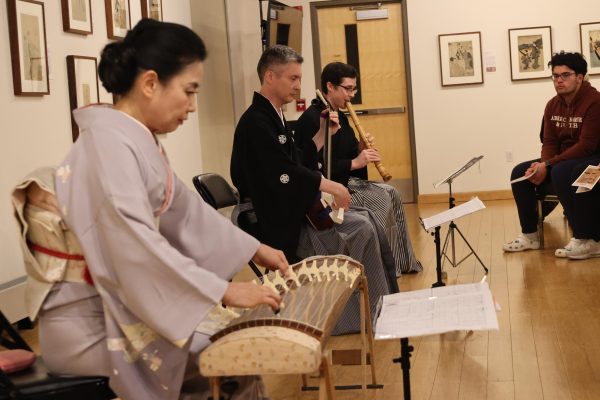New NCAA Bat Testing
April 27, 2022
The new implement of bat testing by the National Collegiate Athletic Association (NCAA) has flaws and may be unnecessary, according to coaches and players.
The new bat rule for the 2022 season requires teams to test bats for size and compression, but there are problems from obtaining the machines to testing the bats.
“I think it is stupid,” said Pete Egbert, Misericordia baseball coach. “I don’t think they are saying it is a liability thing and, in all my years, I don’t remember guys getting hurt from batted balls.
Egbert said the NCAA has bigger problems to worry about than the testing of bats.
“I think it is completely unnecessary,” he said.
The new rule has holes in it, according to Egbert and could hurt smaller schools like Misericordia. Schools with lower budgets for baseball are struggling with buying bats and obtaining these machines which are not cheap.
“These companies are charging $450 per bat and the quality of the bats is awful,” Egbert said. “Every year we will buy eight or 10 bats and, by halfway through the year, half of the bats are broken or cracked and you can’t replace them right away; it’s a four to six week process to replace.”
Egbert feels the NCAA should be worried about a bigger problem.
“We have to find a solution to the bigger problem which is the quality of the bats,” he said.
Smaller schools with lower budgets must buy their own bats, which is already expensive and now they also must buy the machine which costs a total of $1,350, according to NCAA.org. This puts a hole in the budgets of Division 3 schools and gives them less money to spend on other purchases like bats, renovations and other facilities.
There is also a problem with obtaining the bat testing kits.
Egbert said there is only one company making these bat testing machines, and it is causing back orders.
“Everybody purchased one but there are teams that still don’t have them,” he said. “And some haven’t shipped yet; there was a back order and only one company makes them.”
These problems relate to the machine and the prices of everything but what about the actual testing of the bats and why might there be problems there?
Egbert said people testing the bats are misinformed on how to test the bats and do not do it correctly.
According to the official NCAA guide, the metal ring around the bat is supposed to be put into the machine first to see if it will fit. This is the first part of the mandated bat testing but, for the second part, people don’t seem to follow the protocol created by the NCAA. The rule states the bat must be tested three different times and at least 2/3 tests must be positive or the bat becomes illegal and can’t be used. The problem is the people testing the bats typically only test them once.
“The bats are usually only tested one time in the machine and it’s because the person doing it doesn’t want to do it longer than they have to,” said Randy Mateo, sophomore infielder for the Cougars. “They want to speed up the process as much as they can so when we see other people testing, it usually only happens once for each bat.”
This creates a problem because, if the machine says a bat is legal once and the person testing the bats says it is legal, the bat could have gone on to be illegal, but the person testing doesn’t usually test the bat three times.
Another problem is that it takes too long to test all these bats.
“It probably takes 35 to 40 seconds per bat,” Egbert said.
But that 40 seconds only consists of one test of the bat, not the implied three, meaning it would take longer, causing this process to be long and grueling for the person doing the testing.
Also, the person testing the machine is appointed by the coach of the team. At smaller schools with a limited amount of coaches and volunteers, the tester usually ends up being a player.
“It takes way too long, and it is annoying to do for everyone that is involved in the process,” Mateo said.
“NCAA usually doesn’t get rid of rules right away because they do not want to admit they were wrong,” Egbert said.
It looks as though college baseball will have to welcome this new bat testing regulation for at least the next couple of years.






